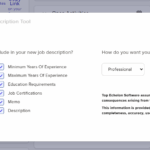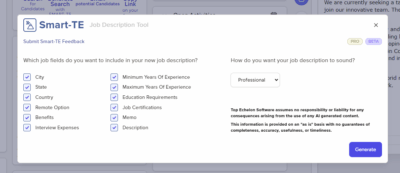Recruiting has changed. The advent of so many startups, a new generation of workers, social media and technology, have all changed the game. Not only has the way we go about crafting job descriptions and posting roles changed, but even the start of the recruiting phase now begins well before a position is actually open. With everything that is evolving within talent acquisition, what hasn’t changed is that better recruiting leads to lower turnover and a lower cost per hire.
Consequences of a Bad Hire – Beyond Turnover Cost
This recent study shows the average cost per hire to be at $4,000. But what is the turnover cost per hire if they’re bad hires? Turnover costs are estimated to be one-third of a new hire’s annual salary or more in order to replace them. However, the consequences of making a bad hire go beyond this. There are other costs as well, such as reduced morale among employees, disruption to a department, slower production, an increased workload, and depending on their position, the potential of lost sales or customers.
There are a whole host of factors that contribute to employee turnover; boredom, low pay, lack of recognition, limited advancement opportunities, dissatisfaction with management. However, one of the largest reasons for high turnover, 80% according to a statistic by The Harvard Business Review, is due to making a poor hiring decision in the first place.
How do employers avoid costly hiring mistakes? The following are some best practices to incorporate into a high performance recruiting strategy.
Recruit Top Talent Before You Have a Position to Fill
Frequently mentioned for their unorthodox business practices, Zappos has again gone off course with another standard business practice. Rather than posting a job description on their website, they decided to use technology and social media as a way to allow interested candidates to really put their best foot forward, and give them a chance to introduce themselves in fun and creative ways, explaining why they want to work for them. This changed the model from recruiters pouring over resumes and cover letters, looking for skill set matches and reading through work history, to candidates putting themselves front and center, connecting through social media channels, showcasing their talent and selling their skills in such a way that the company can look at where they’d be a great fit, rather than just filling openings as they become available.
Many companies have begun keeping a talent pool they regularly connect with via email and social media, sharing company updates and keeping them apprised of any changes. Staying engaged with talent and building relationships before you have an opening, or before they’re ready to make a job change, positions you better for when the time comes.
No More Job Postings
At least not the ones we’re all used to. Another change that Zappos adopted was to do away with traditional job postings in favor of a posting that showcases their culture and sells their benefits. Instead of a bulleted list of tasks filled with keywords and requirements, consider highlighting those things about your company and your culture that make working for you rewarding.
A set of tasks does not entirely describe the actual work someone does, not if you expect them to be happy. Look at job descriptions and make sure they’re fresh and reflective of the work being done, and needing to be done. Positions evolve and change over time. Additionally, people need to know what expectations are being set for them; what they’re working toward. They need more than a checklist of tasks to complete in a day. What is their big picture? What long-term objectives are they working toward? This sets them up for a more satisfying career within your organization.
Interviewing Takes a Village
The interview process should always be behavioral based. It’s important to keep in mind interview questions cannot be vague. You are not looking at what someone thinks they would do in a hypothetical scenario, but rather what they have done in a similar scenario. For example, rather than asking someone how they would handle an angry customer, ask them about a time a customer called upset because their order was wrong, how they handled it and what the results were. This gives you tangible data to work with, rather than well-rehearsed interview answers.
It’s also important to involve multiple people from different areas throughout the organization in the interview. Who are some of the key players from different departments who may have a vested interest in making sure the person placed in this position is the right fit? Ask them to participate in the interview. An interview is the time to showcase the culture of the company, and a company’s culture is cultivated by its employees. A culture cannot be forced, it evolves over time, and your employees are those folks who should be spending time explaining what’s different about your company, how it differs from your competition, or how it differs from the candidate’s current and past employers.
Hiring Decisions Should Not Be Based on Skills
Well, not entirely anyway. There are plenty of intangible things to keep in mind as well. Like working in a collaborative environment, leadership, and communication style. Another critical thing to keep in mind when looking at the qualities of a candidate is that no matter how fantastic their experience may be, an equally important characteristic is that their beliefs and principles match those of the company.
Recruiting has changed, the process of acquiring talent looks very different than it did just a few short years ago. It’s important to keep these best practices in mind as you remember that better recruiting is the key to reducing the costs of hiring and high turnover. If you’d like to know more about how Top Echelon Recruiting Software can transform your recruiting process, we’d love to hear more about your recruiting needs.








